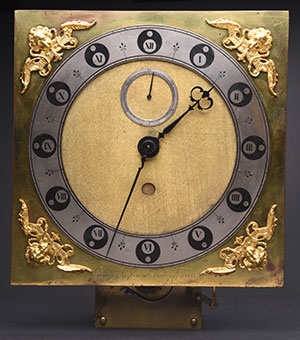Greyfriars, Waterford, X91 CF95
076-110 2501, bookings@waterfordcouncil.ie
https://www.waterfordtreasures.com/irish-museum-of-time
By Tony Canavan

Located in a converted church, the Irish Museum of Time is the country’s newest museum. Its collection is spread over two storeys and as soon as you enter you are struck by the spectacle of polished wood and gleaming brass. Almost every conceivable type of timepiece is represented here: longcase (grandfather) clocks, table clocks, wall clocks, watches, railway clocks, factory clocks and so on. The collection is based around donations from two of Ireland’s most prolific and long-standing horologists, David Boles and Colman Curran, both from Dublin. Along with the oldest Irish clocks, the museum also has pieces from around the world, including America, Britain, France, Austria, Switzerland and Japan. In all, there are more than 600 items on display. Waterford itself is fast becoming Ireland’s city of museums, as the Museum of Time brings to five the number of museums in the Viking Triangle.
Although none of the clocks are actually running (the noise would be maddening), the museum is lively and full of sounds. As you go in you encounter some of the oldest clocks in the collection, dating from the sixteenth and seventeenth centuries. These come from Germany and even include an early example of an oval pendent watch from c. 1600. Every exhibit has a panel explaining its significance, and some also have a small screen which locates the origin of the clock and relates its history. Hi-tech wizardry is at a minimum, however, and the most outstanding example is to be found in the recreation of Patrick Maddock’s shop. Here you will see clocks in various states of assembly and disassembly, along with the clockmaker’s tools on benches and shelves. A hologram of the man himself appears and explains the Huguenot origins of clockmaking in Waterford and the history of the shop.
It is mostly longcase clocks on display on the ground floor. Many of the clocks here are not just functioning timepieces but also works of art. Different woods, such as oak, pine and walnut, provide the polished cases for the mechanism, and these are decorated with inlays, statues and even paintings. This area has Ireland’s oldest known clock, which was made by William Lucas of Dublin c. 1685. As well as the longcase clocks, there are others designed to sit on a table or hang on a wall. There are also clocks with no casing, giving you the chance to see their innards and what makes them work. Clockmaking was common throughout Ireland in the eighteenth and nineteenth centuries and the museum has examples from almost every town in the country. Every clock has a story, such as that from Waterford which was made by Philip Brogan, who was transported to Australia in 1842 for the theft of a watch. Nearby is a miniature longcase clock, probably an exhibition piece, made by Isaac Francis of Dublin.

It’s not all clocks, though, as they are set in context by items of furniture and paintings, adding dimension to the collection. This is carried on upstairs, where one of the paintings, described as a ‘humorous Irish rural indoor scene’, depicts a man cleaning the inside of a clock with a pair of bellows. If the ground floor was impressive, the upper storey is spectacular. Here there are amazing, out-of-the-ordinary examples of the clockmaker’s art, from the ornate golden mantelpiece clock made in Paris in 1815 by Moinet l’Aîné to the elegant but simple nineteenth-century Vienna clock. Germany mass-produced clocks in the industrial age, and examples of the Black Forest ware on display here include the large, intricately carved cathedral clock from 1870. In this area, too, look out for the mysterious elephant clock and others with human figures holding the timepieces.

The most striking display upstairs is the large cabinet holding watches from around Ireland. Here, too, you can see a great variety of styles and sizes, as watchmakers catered to the wealth of the buyers. The watches themselves surround a large interactive screen where the visitor can learn more about particular watches, where they were made and their history. On a wall not far from here is a selection of marine clocks. In an era before radios and satellites, clocks were essential to the running of a ship, when the duty rota was divided into ‘watches’, and also for navigation, as having the correct time enabled the navigator to take accurate bearings from the sun.
There is a lot more to this museum and I would certainly return for another visit. You don’t have to be interested in clocks to enjoy it. The clocks themselves can be appreciated for the works of craftsmanship and art that they are, but the history of the timepieces takes in so many aspects of Irish society in the past that you are certain to learn something new. With the addition of this museum, Waterford’s Museum Triangle is certainly a must-go destination for everyone.
Tony Canavan is Consultant Editor of Books Ireland.
